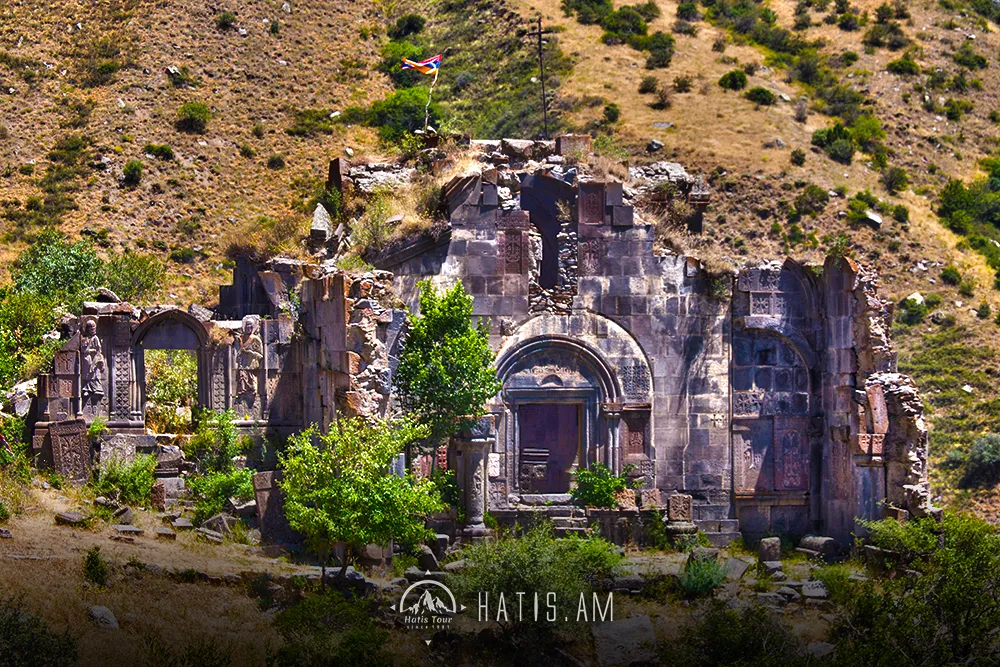.webp)
Makaravank Monastery is located in the Tavush region of Armenia, 3 km southwest of the village of Achajur. X-XIII centuries. For centuries, this Armenian monastery complex has consisted of the main church, the narthex and the 2nd oldest church. according to the inscription on the khachkar, erected to the south of the main church, it was built in 1205. Rectangular on the outside, cruciform on the inside, with two-story sacristy on both sides of the altar has a domed composition built of polished pink andesite stones (the Northwestern niche was later rebuilt into a sacristy). The southern and eastern facades are decorated with a pair of triangular niches (the niches in the northern wall were blocked by the volume of the porch, built later)., the round drum of the dome (the lid is removed) is decorated with a decorative arch of a pair of semi-columns. On the western facade there is a porch with a luxurious ornament, the half-timbered wall of which is lined with colored stones in a checkerboard pattern. The north porch facing the lobby has almost the same design. Under the window of the southern wall of the church there is a bas-relief of an eagle holding a calf in its claws, which is distinguished by high craftsmanship. In the bright and spacious hall of the church, The decoration of the altar with an original solution is very impressive. The semicircular wall of the altar is decorated with 13 concave niches separated from each other by a pair of arched columns. The entire surface of the stage facade is covered with bas-reliefs embedded in octagonal stars and octagonal polygons, which are among the masterpieces of medieval Armenian art. The coat of arms of Vachutyan with the image of a pair of Eagles. The sculptures of the Makaravank fishes are notable for their plasticity and realistic style of execution in medieval Armenian art. On one of the stars is carved a portrait of a church architect (sculptor) with tools in his hands and his name "young".


.webp)
.webp)
.webp)
.webp)
.webp)
.webp)
.webp)
.webp)
.webp)
.webp)
.webp)
.webp)






.webp)
.webp)
.webp)
.webp)
.webp)
.webp)
.webp)

Leave a comment